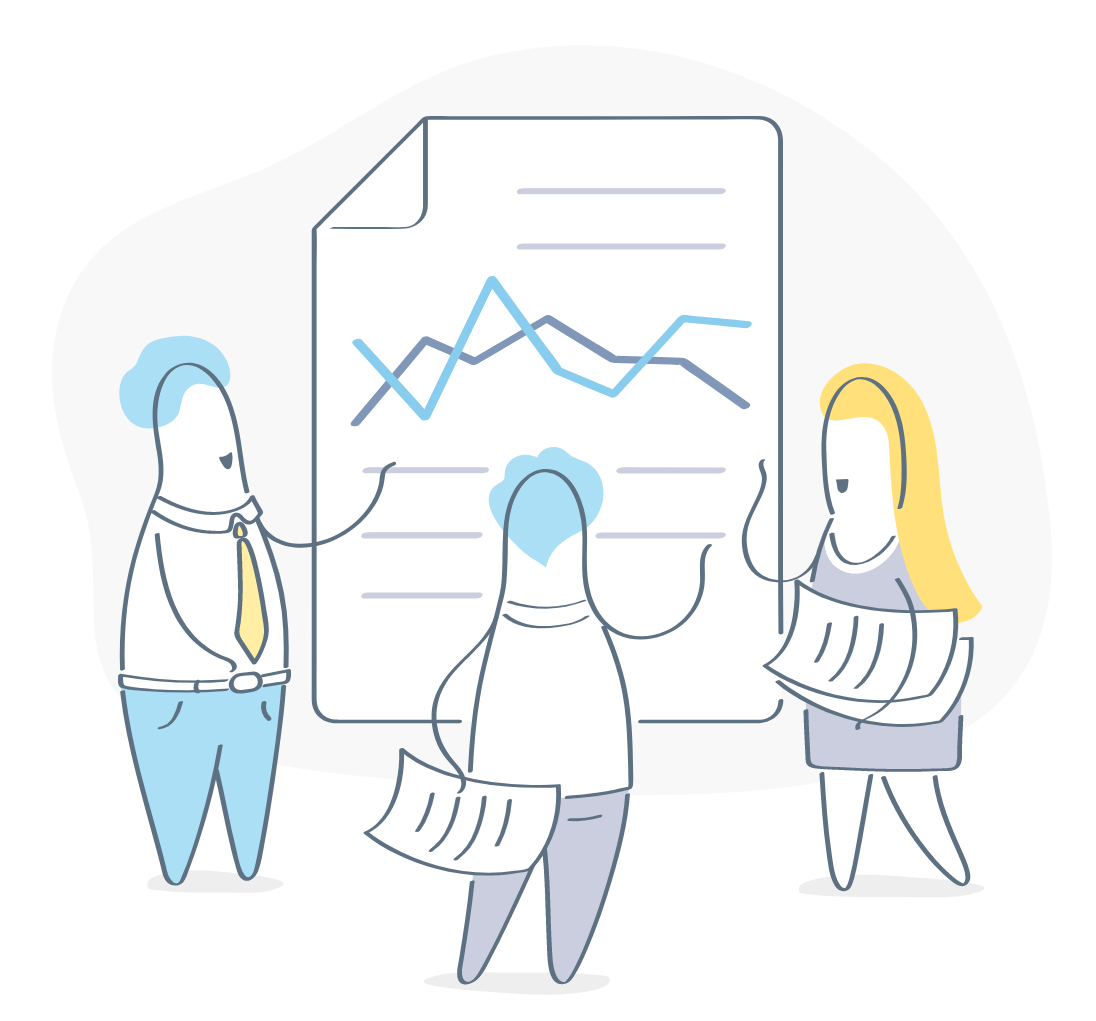
by admin | Dec 24, 2019 | Software Testing, Fixed, Blog |
What is meant by an error or a bug in software development? It is a deviation from purported accuracy and failure in a computer program/system that causes it to produce an incorrect result. There is no software without bugs, and testers encounter new defects every day. Some are standard and frequently appear in comparison to others. Instead of a random search, a systemic process will help uncover quickly multiple defects that need to be fixed before product launch to market.
That’s why software testing services companies are making sure their teams are up to date on testing bugs/errors in their software, apps, or builds. Let’s discuss some common types of bugs or errors all software testers encounter during software testing.
Crash: A sudden failure of the software application, operating system, hardware device is known as a crash error. It occurs when there is wrong device usage, underutilization of device intelligence, and misunderstood status of instruction codes.
Functional: The software is expected to behave a certain way, and this is commonly known as functionality. If it varies from the expected output, it is known as functional error.
Acknowledgment message: An error is caused when the user is acknowledged/given feedback with the wrong message or no message after doing an action.
Error handling: When the user interacts with the software, it needs to be handled properly. If not, an error occurs. Users should be informed about the cause of the error and how to rectify it, for example, mandatory fields in a form.
Incorrect calculations: Errors that arise from localization or when developers key in wrong formulas, unit of measures, data type, coding, or conversion factors.
Control flow: Software control flow means that certain processes must happen in a specific order for the software to function correctly.
Boundary related: It is caused due to limitations in loop, space, time, and memory or mishandling of cases outside the boundary.
Communication: Errors when you can’t find newly implemented features in the documentation even though they have passed functional tests due to communication issues.
Syntax, typos, and grammatical: While testing the GUI of the product, the product must be translated into different languages, and thus syntax, typo, and language errors are possible.
Missing command: The absence of a logical option for pop-up windows can cause a missing commands error, which causes end-user dissatisfaction.
Compilation: QA teams should conduct a sanity test before the build being launched to avoid compilation errors due to quick fixes and rush to market.
Load and performance: Load test behaviors for speed, denial of service, or incomplete handling. Performance tests are concerned with speed, tracking processing time, transmission, and screen rendering.
Security: Penetration testing checks input user text and should be validated for proper format. It entails snippets designed to trick the database into showing errors.
Not all errors are the same, and there are various ways to categorize these bugs based on frequency, severity, module, and layers. So document your entire bug tracking system to ensure you stay on top of fixing them. Hire a top software testing company like Codoid, to take care of your bug testing needs and outsource your QA needs to us.

by admin | Dec 11, 2019 | Software Testing, Fixed, Blog |
Digital transformation continues to dominate as the future in the world of business, and the banking industry is no different. The many digital undertakings, ideas, and trends are sure indicators of digitization: Omni-channel and anywhere banking, mobile wallets, and many more are some of them. Research and reports indicate that the number of worldwide mobile banking users is expected to touch about two billion by the year 2022. The world of banking is complex, which in turn means that the technology would be top line and constantly changing and increasingly intricate with a lot more functionalities woven into the applications. Delivering top service and performance while ensuring business continuity, is necessary to drive ROI in the banking industry. As a leading QA company we are experts in testing banking applications to ensure sustained high quality, which in turn helps to sustain optimal ROI.
All commercial activity revolves around banking, with each bank possessing humongous functional frameworks to support the many core activities and specialized service offerings. It is therefore imperative that transactional accuracy, availability, top performance and ease of access and use remain the fundamental competencies of banking applications. To understand better why regularly testing banking applications is critical, we list some of the top core characteristics of such applications:
- Multi-level functionalities to ensure smooth performance even with thousands of simultaneous user sessions.
- Seamless and extensive integration with several applications such as bill paying, trading, and more.
- Complicated and multi-faceted business workflows.
- Group and real-time processing.
- Highly secure transactions, with a high rate of transactions each second.
- Meticulous reporting for the innumerable daily transactions.
- Robust auditing and troubleshooting ability.
- Seemingly infinite storage.
- Disaster and Recovery Control.
The characteristics mentioned make the banking applications and systems highly complex and hence regular testing becomes critical to maintain top quality at all times. It makes sense for the banking industry (and other industries) to team up with an expert software testing services company, for the testing and smooth operation of their applications. We test banking applications to ensure:
Several users and banking staff often lack computer skills, and it is necessary to ensure that the applications are consistently user-friendly and interactive. The banking staff (in addition to customers) must be able to easily create new clients, assign them with banking identities, and be able to easily manage the operations of the bank – all the functionalities must be accessible and convenient to use with a few clicks. The interfaces should have simplistic graphics as also hints on how to work them. Such simplistic banking applications would save a lot of time and effort for those working at the banks, while also ensuring customer satisfaction. A smoothly functioning application would gain praise and an edge for the QA services company – ample reason to ensure top quality testing of banking applications.
The traceability matrix method has the highest utility and is one of the top approaches to check the functionality of banking software and applications. As one of the top QA companies, we ensure that the dependencies, internal and external operations, boundary sections and others are thoroughly tested. Consistent smooth functionality of applications is quintessential to the success of banking operations – and we guarantee it.
Employees and customers often complain about the performance of the banking software. Poor performance of the banking applications does have an adverse effect on the working of the banking staff, which in turn is translated to poor service leading to irate customers. Numerous and regular inaccuracies are usually caused by a very large number of users and several operations running simultaneously. Regular updates and upkeep of the system is therefore essential to ensure the seamless performance of the banking applications. Without such upkeep, not only will there be the unwanted effect of user ire, but major issues such as data loss and leakage. Load, stress, and performance testing are highly critical to avoid any such issues, and ensure top working banking applications, despite heavy workloads.
Banks are entrusted with confidential customer data, and hence ensuring the confidentiality and security of this data must be the prime concern for any such institution, more than any other given the financial transactions. Security testing of banking applications therefore is mandatory and must be entrusted only to the experts of software testing within the banking domain. We at Codoid work with contemporary tools and comprehensive test strategies, which not only help to check the software functionality but also predict possible future risks.
Given that online banking must and do work 24/7, it is necessary that software testers apply load, performance, and stress testing in the same – simulating all the possible issues that users may face.
When creating and testing banking applications and software, the perspective and ease of the end user must be kept at the fore by developers and testers. It is imperative to hire the best QA service providers who would not only focus on finding errors but would also be able to suggest ways to improve the products. We are an expert company, with teams that have in-depth experience in testing and ensuring the overall quality of banking software /applications. Connect with us to work with the best.

by admin | Dec 15, 2019 | Software Testing, Fixed, Blog |
There are various essential phases in software development, like requirement identification, actual development, testing, and installation on the end-user system. Due to human error, bugs can quite easily get introduced into the software during its development phase. That’s why before releasing code for installation on a clients’ server, software testing has to be done in advance to avoid any fallacious execution that could ruin the user’s experience.
It is a conventional form of testing where test engineers check if the developed application is working according to the requirements or not. Right from the coding phase of SDLC to the end, the software goes through thorough testing of every component of the software. The QA team must take into account every possible scenario while designing the test cases. Whatever type of test data is used by your QA team impacts the overall testing process.

Traditional software development and its testing is a spiral process. Let’s discuss the testing techniques for conventional software architecture.
1. Unit testing: At the center of the testing spiral, you begin with unit testing, which aims to test every component/unit of software for functionality to ensure code works properly as a unit.
Some types of unit examples are:
- Interface testing: Checks the proper flow of information in and out of the program.
- Local data structure testing: During execution, it checks the integrity of data.
- Boundary condition testing: Ensures smooth operation to limit processing at boundaries.
- Independent path testing: Requires all statements to be executed once, at least.
- Error handling path testing: Checks if error messages are user-friendly.
2. Integration testing: It focuses on the problems of verification and construction because further down the testing process, these units must be integrated to form a complete software package.
3. Validation testing: This higher-order test uses validation criteria defined during the requirement analysis phase to check if the software meets all functional, behavioral, and performance requirements.
The QA/testing team tests the software to see if it provides the desired results or not by feeding the data into the system and executing it. Analyze the output and see if the desired results are generated because this is the primary purpose of creating the entire testing process. To ensure that the software keeps performing correctly even if the end-user enters wrong information. It should not yield unexpected results in the case of non-standard inputs. There should be sufficient test data to check the responses of even adverse scenarios. Hence, expert testers and developers are divided over their opinion on whether real or synthetic data should be used for testing purposes. For example, wrt to narrowly focused tests, synthetic data works better, but actual test data is better suited for close simulations.
A leading QA company will always be able to advise you accordingly and in the long run, help reduce high costs to your business. That’s why you should employ a top software testing company like Codoid to handle all your testing requirements.

by admin | Dec 21, 2019 | Software Testing, Fixed, Blog |
Accurate metrics and techniques can help ensure software testing service companies improve their testing processes. Teams should be equipped with the tools and methodologies for building bug-free products to provide high-quality software. Quality management covers three core aspects: quality assurance, quality control, and testing.
Software Quality Assurance (SQA) includes a planned set of organizational actions to improve the software development process by introducing standards of quality for preventing errors in the product.
Software Quality Control (SQC) includes a set of product-oriented activities focused on fulfilling quality requirements that certify software products before release.
Testing is a primary activity to detect and solve technical issues in the software source code and assess overall product usability, performance, security, and compatibility.
Let’s discuss how to improve the software testing process and increase the quality of your software products.
1. Plan tests and processes It should be well planned, defined, and documented as it is the tool that builds effective communication within the team.
2. Implement software development management Employ a test-oriented approach to improve the quality of your software and achieve this is by using extreme programming (EX) that will enable you to produce higher-quality software that can adapt to changing requirements.
3. Collect technical reviews A Formal Technical Review (FTR) is performed to reveal functional or logical errors at the early stages of the software development process. Every developed software needs to meet predefined standards and requires a team of QA/QC engineers.
4. Maintain a suitable work environment Define QA roles and ensure an appropriate environment wherein testing entails various activities that need to be performed by different specialists.
5. User acceptance testing In product development, customer personas identify behavior patterns of your typical target audience and their usage patterns. QA teams use personas to identify and seek bugs. Although it can’t predict in its entirety, it does ensure that your application is production-ready. Feedback during and after the production stage helps developers meet end-users needs.
6. Optimization of tests To improve the quality of your software, make sure you adopt Agile methodologies to deploy automated testing using tools to run the tests throughout the QA process.
7. Track code quality Since quality objectives are measurable, ensure that code quality is documented, reviewed, and tracked cyclically by choosing simple yet effective metrics for your workflow.
8. Accurate bug reportingThis makes testing more efficient by identifying bugs and assisting QA teams in resolving it soon.
Please remember that the main aspects of testing the quality of the software testing process are performance efficiency, security, reliability, maintainability, and timely delivery. It can also include testability and product usability.
If you want to be a leading QA company, like Codoid, you need to be competitive and produce high-quality products to achieve a good ranking in the IT industry market. Improving the quality of your software testing process will directly impact the financial performance of your business. Your quality strategy should, therefore, cover the critical aspects of software testing: Effective Planning, Test-oriented Quality Management, and an Experienced QA team. Don’t forget that years of experience in the testing phase guarantees that nothing is missed out in the software testing process flow.

by admin | Nov 8, 2019 | Software Testing, Fixed, Blog |
Only the best QA companies will be equipped with an expert team of testers, proficient in writing top quality test cases. A test case must be a meticulously drafted document, prior to executing a testing process and must include a range of essential details with regard to the testing process. This document would serve as a blueprint for testing including elements such as test data to be input, preconditions, possible and expected results, and much more.
A test case can be defined as a set of conditions and variables put together to ensure and verify the functionality of software against expected requirements. A company offering QA services within software testing, would be proficient in using test cases to uncover requirement issues, design an application, and be able to make the requisite changes that would validate the efficacy, functionality and quality of any software product.

Elements of a Test Case
Only the best software testing firm would understand the critical relevance of writing robust test cases. Such a company would cover features that would be important for a robust test case, thereby ensuring the effectiveness and accuracy of software testing. The features of a high-quality test case are listed below.
- Designed in accordance with the Software Requirement Specification.
- Ensure standardization and uniformity throughout the process of testing.
- Outlines the complete flow of specific requirements through test data and results expected
- Detailed information together that is easily understood, comprehensive, and concise.
- Contain a complete list of variables by which testers would be able to verify the functionality, optimal performance, testing requirement, and other critical aspects of the software.
- Serve as a benchmark/information document for future test cases and other testers.
Test Case Format
The main components of a good test case include an ID, a description, some inputs, actionable items, and expected and actual results.
Test case Title/Name: Any test must have a self-explanatory name.
The Description: This would include a brief narrative to let testers know what they are about to test.
Assumptions/Prerequisites: Any assumptions and prerequisites to be met before executing the test would need to be mentioned
Clear Test Steps: Clear, brief, yet comprehensive steps with necessary information to help with efficient test execution.
Data Set: This should provide optimal coverage, including both positive and negative scenarios.
Results Expected: This outlines what the testers should find at the end of the test steps.
Actual Result: The actual behavior of the application during test execution.
Miscellaneous: Additional and useful information, including but not limited to, screenshots, to help testers.
Putting Together a Good Test Case
An expert software testing/QA company will be proficient in all aspects of software, including writing the best test cases. A good test case would –
- Focus on aspect and would not be complicated or overlap
- Cover all positive and negative scenarios
- Easy to comprehend language in active voice, using uniform and exact names of elements
- Be accurate – stating the exact purpose
- Traceable to requirements
- Comprehensible and accessible in order to be used again
- Make it possible to perform the same test repeatedly
In Conclusion:
There is no doubt that test cases are extremely critical as the first step for any software testing project. Anything that were to go awry at this stage would have negative and possibly far-reaching effects in the life cycle of the project. Test cases are therefore highly potent documents to ensure that a system, its elements, and experience are exactly as they are anticipated. A business must invest in the services of a top QA company to ensure all this and more. We are the go-to company for every realm of software testing – connect with our experts.

by admin | Nov 7, 2019 | Software Testing, Fixed, Blog |
Currently, within the development environments, developers work on selected features and code without the involvement of QA teams. Once the code is done, it is passed on to the QA teams to test, and only if there is a bug do developers hear from the QA engineers – the typical ‘throwing the code over the wall’.

Software development companies continue to operate in this manner given that it is the traditional way of doing things – with software developers hardly interacting with their QA colleagues. Expert developers create top-quality code, features, and a strong infrastructure, but it is still possible for issues to arise. This happens because of their failure to look at the scope of the product in its entirety, lack of focus on details, or simply the inevitable human error. This is where the role of QA engineers comes to the fore – they need to meticulously test features to ensure that the product released to the market is of high quality. In the realm of software testing and as an expert QA company, we understand and manage the strife between developers and QA engineers. While developers hate code they script to be tested, QA engineers hate having to deal with the tough time that developers may give them. However, it is important to understand that the goal is the same for all – high-quality products. We have put together some phrases that developers often repeat, much to the chagrin of QA engineers – but all the same, it is about the spirit of working in unison and cohesively.
Developers often say:
“Strange – I can get it to work on my machine”The statement comes about when QA engineers find bugs that may have slipped past developers, unnoticed. This usually occurs when due to scale or varying structures the issue does not get reproduced on the environment that developers work within but is reproduced within the production environment. As a leader amongst some of the best QA companies, we understand that it is the environment, and hence both the teams must work together to investigate the issue and resolve it since the customer expects top-quality software.
“The bug you found, we checked and confirm that it is time to release”Upon finding the bug and returning the code to the developers, the mistake that developers make is to believe that it is possible to immediately release the code to production. However, the fixes checked need to go back to the QA team since the changes could possibly affect some other parts of the product, which developers may not be able to notice. Again, the idea is to put up a product that is error-free and top-notch quality – to ensure maximum ROI for the business.
“Are you using the new feature in the right way?”Developers may have done their best with the new feature / or with upgrading a current feature, and hence it is usually tough for them to believe that it is not working as designed. However, when the feature goes into testing, QA engineers may find that it does not work as anticipated for various reasons – it is important for developers to understand this and work with the QA team to ensure that the product reaching the customer is high quality.
<
“No not a bug – this is how the feature is supposed to behave”It is obvious for developers to feel annoyed, when they have created what they believe to be a super quality feature, and the QA team tells them that there is a bug. The job of QA engineers is to view a system as a whole – including from the perspective of the user. While developers may not want to agree but it is necessary to keep communication open in order to produce the best for the customers. It is important for both sides to make time to understand the viewpoint of the other since doing so has undeniable rewards.
“You took too long to find the defect”After all the hard work that developers put together to create a code, it does become frustrating when at the last minute a bug is discovered. The feeling does creep in that the QA team took far too long to uncover the bug. However, it is necessary to understand that there is a systematic method to the process and it is never the intention of a QA team to take longer than is required.
“Test the latest / right version of the code – make sure you are”Developers often doubt whether QA personnel would be – using the new feature right, testing the latest version of the code. These doubts are unfounded since before testing the QA team would ensure that the commit is within the latest version of the code being tested.
As a professional and highly skilled QA company, we know that the end result must be a top-notch product for users – unless developers and QA teams work together this will not be possible. Both teams must take the initiative and enhance collaboration with each other in order to deliver a high-quality experience for the user. Both must remember that creating and testing are means to an end, which would be high quality and the best ROI for the business. For hassle-free and top-notch products, connect with us and let our experts take over.






























